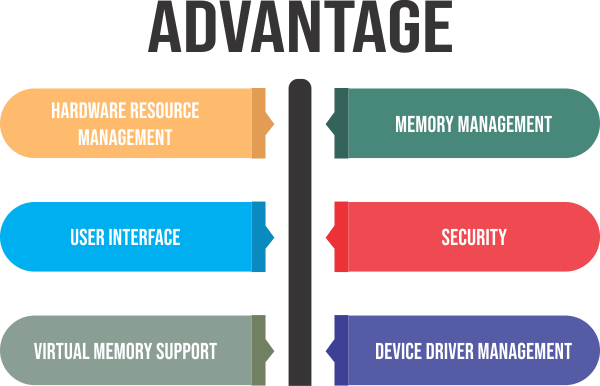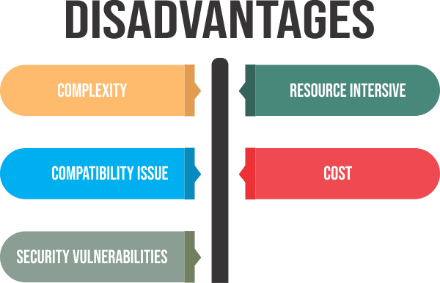Advantages and Disadvantages of Operating System
An operating system (OS) is a set of software programs that manage computer hardware and software resources and provide common application software services. It is the most fundamental software component of any computer system, whether it's a desktop, laptop, server, or mobile device. Operating systems have been around since the early days of computing and have evolved significantly. They have become more sophisticated, powerful, and complex, but they also come with several advantages and disadvantages.
Advantages of Operating Systems

- Hardware Resource Management: The operating system manages computer hardware resources such as the central processing unit (CPU), memory, storage devices, and input/output (I/O) devices. The OS allocates resources to various programs, ensuring each program gets enough resources to function properly. The operating system also provides a standardized platform for software developers to create and distribute their applications, which can help to reduce development and distribution costs. Developers can target a large user base by developing software for a particular operating system without worrying about compatibility issues across different hardware platforms or operating systems.
- User Interface: The operating system provides a user-friendly interface that enables users to interact with the computer system. The GUI (Graphical User Interface) makes it easy for users to perform tasks such as file management, program execution, and system configuration.
- Virtual memory support: The operating system uses virtual memory to increase the amount of memory that is physically available on the system, which is useful when running applications with high memory requirement. Effective memory management in the operating system ensures that virtual memory is used efficiently and prevents memory-related issues.
- Memory Management: Operating systems manage computer memory, ensuring that programs have the necessary memory. The OS uses virtual memory and paging techniques to optimize memory usage, improving system performance and stability.
- Security: Operating systems provide security features to protect against unauthorized access to the system and data. They also provide virus scanning, firewalls, and other security features to protect against malware.
- Device Driver Management: The operating system provides a device driver interface that enables hardware devices to work with the computer system. The OS communicates with hardware devices using device drivers, ensuring that they function properly.
Disadvantages of Operating Systems

- Complexity: Operating systems have become more complex over the years, making them harder to understand and use. The complexity of the operating system can make it difficult for users to troubleshoot problems or perform system maintenance.
- Resource Intensive: Operating systems require significant memory, processing power, and storage space. This can make it challenging to run multiple programs simultaneously, especially on older or low-end hardware.
- Compatibility Issues: Operating systems are designed to work with specific hardware configurations, making difficult to use them with other hardware. This can lead to compatibility issues when upgrading or replacing hardware components.
- Cost: Operating systems can be expensive, especially for enterprise-level systems. The cost of licensing, maintenance, and support can add up quickly, making it challenging for small businesses or individuals to afford. Overall, the cost of an operating system can be a disadvantage because it can be a significant expense for individuals and organizations, and it can limit access to the latest technology and feature for those who cannot afford it.
- Security Vulnerabilities: While operating systems provide security features, they can also be vulnerable to security threats. Malware and other threats can exploit vulnerabilities in the operating system, compromising system security and data integrity.
Conclusion
Operating systems are essential to any computer system, providing critical functions such as hardware resource management, user interface, memory management, security, and device driver management. However, they also have some disadvantages, including complexity, resource-intensiveness, compatibility issues, cost, and security vulnerabilities.
As technology evolves, operating systems will play a crucial role in the computing ecosystem. It is essential to weigh the advantages and disadvantages of different operating systems to determine which is best suited for your needs. Ultimately, the right operating system will depend on your hardware, software, and security requirements.